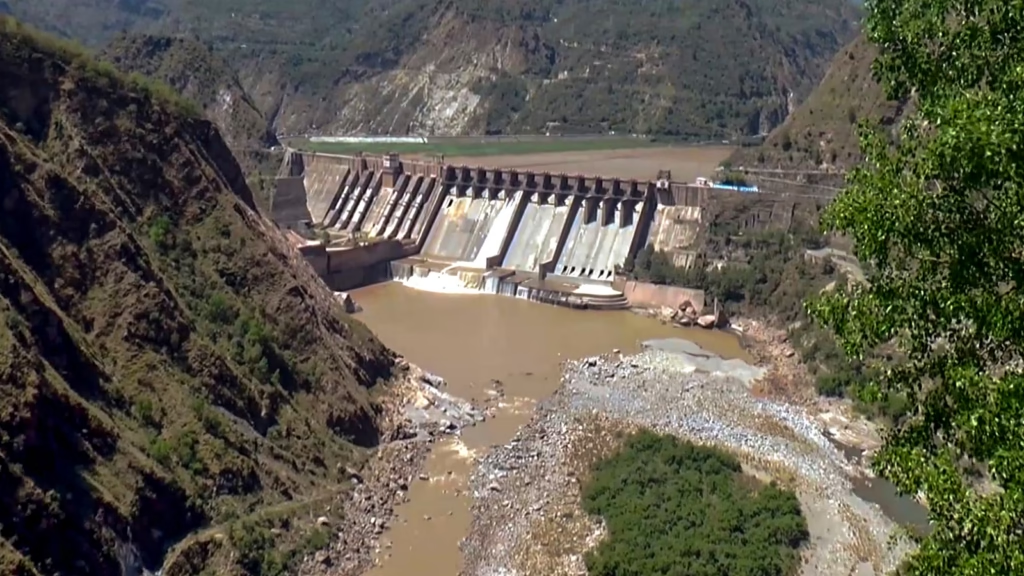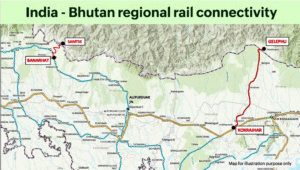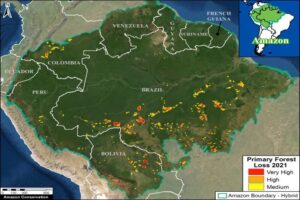
Centre to Fast-Track 4 Hydro Projects in Kishtwar
Centre to Fast-Track 4 Hydro Projects in Kishtwar, Including Dam at Pakal Dul — CLAT 2026 Current Affairs
Why in News:
The Central Government of India has decided to expedite four major hydroelectric power projects in Jammu and Kashmir’s Kishtwar district, including the strategically important Pakal Dul Dam. This decision follows India’s recent steps concerning the Indus Waters Treaty, especially after suspending the treaty’s operations with Pakistan.
This topic is of strategic, economic, and legal importance and is relevant for CLAT Current Affairs 2026 due to its interlinkages with international treaties, federal governance (Centre–State relations), environmental concerns, and national security.
Introduction:
India’s push toward energy self-reliance, particularly through renewable energy sources like hydropower, is exemplified by its commitment to fast-tracking infrastructure in sensitive border regions. The decision to speed up the run-of-the-river hydro projects in Jammu and Kashmir’s Kishtwar comes amid strained relations with Pakistan and strategic interest in maximizing water usage under the Indus Waters Treaty (IWT).
The Pakal Dul, Ratle, Kiru, and Kwar hydro projects, with a combined capacity of over 3,000 MW, not only reflect India’s energy ambitions but also its assertive water diplomacy.
Point-Wise Summary of the News Article:
- Projects Under Focus:
- The four hydroelectric projects mentioned are:
- Pakal Dul: 1,000 MW
- Ratle: 850 MW
- Kiru: 624 MW
- Kwar: 540 MW
- Location: All are situated in the Kishtwar district of Jammu and Kashmir.
- Type: All are run-of-the-river projects, which generate power without large reservoirs.
- Strategic Importance of Pakal Dul:
- Pakal Dul is being developed as J&K’s first water storage hydroelectric project.
- It is expected to have limited storage capacity and thus can potentially impact downstream water flow into Pakistan (especially into Punjab).
- It has a greater capacity to regulate water compared to traditional run-of-the-river projects.
- Geopolitical Context:
- The renewed urgency comes after India suspended the Indus Waters Treaty (IWT) in April 2025.
- The move followed a terror attack in Rajouri, which prompted India to reconsider cooperation under the IWT.
- The suspension marked a significant foreign policy shift as India called back its Indus Commissioner and paused engagement with Pakistan.
- Deadline Acceleration:
- The Central Electricity Authority (CEA) directed the following new completion targets:
- Dul and Kiru: To be completed by September 2026.
- Kwar: Ready by December 2027.
- Ratle: Operational by November 2028.
- Implementation Agencies:
- These projects are primarily being executed by JV companies led by NHPC (National Hydroelectric Power Corporation) and J&K’s power bodies.
- Reservoir Capacities:
- Pakal Dul: 109 million cubic meters (mcm)
- Ratle: 24 mcm
- Kiru: 10.5 mcm
- Kwar: 9.2 mcm
- Comparison with Existing Dams:
- The Bhakra Dam (on the Sutlej) has a reservoir of 900 mcm, making it much larger.
- Pakal Dul’s 109 mcm is just over one-tenth of Bhakra’s, but still significant for J&K.
- Legal & Environmental Dimensions:
- These projects fall under run-of-the-river category, which minimizes environmental impact due to smaller reservoirs.
- However, projects like Pakal Dul, with limited storage, can be used strategically to modulate river flow.
Notes: Key Terms Explained
- Run-of-the-River Project:
- A hydro project where water is diverted through a channel or penstock without a large reservoir.
- Advantage: Eco-friendly, minimal displacement.
- Disadvantage: No water storage for dry seasons; power generation depends on seasonal water availability.
- Indus Waters Treaty (IWT):
- A 1960 treaty brokered by the World Bank between India and Pakistan.
- Allocates the three eastern rivers (Ravi, Beas, Sutlej) to India and three western rivers (Indus, Jhelum, Chenab) to Pakistan.
- India is allowed limited use (non-consumptive) of western rivers for hydropower and agriculture.
- CEA (Central Electricity Authority):
- The apex body under the Ministry of Power that plans and monitors power generation in India.
- Storage Capacity (mcm):
- A measure of how much water a dam can hold; mcm = million cubic meters.
- Higher storage capacity allows better control over river flow and water management.
Importance for CLAT 2026 Aspirants
This topic covers key areas often tested in CLAT General Knowledge and Legal Reasoning:
- International Relations:
- Understanding India–Pakistan water treaties.
- Impact of treaty suspension in international law.
- Environmental Law:
- Role and regulation of hydropower projects.
- Interpretation of “run-of-the-river” vs “storage” projects in legal terms.
- Governance & Federalism:
- Centre-State cooperation in large infrastructure projects.
- Involvement of public sector units (PSUs) like NHPC.
- Energy and Infrastructure Policy:
- Push for renewable energy.
- Strategic location of dams in border states.
How CLAT Gurukul Helps You Stay Updated
At CLAT Gurukul, we ensure every student gets access to:
- Daily CLAT Current Affairs 2026 updates.
- In-depth notes explained from a legal reasoning lens.
- Quick revision handouts and mock test-based discussions.
- Topic-wise MCQs from news items like hydro projects, treaties, and environment law.
If you’re looking for the best online coaching for CLAT, trust CLAT Gurukul to keep you ahead of the curve.
Conclusion:
The Government’s decision to fast-track hydroelectric projects in Kishtwar highlights the nexus between energy security, international law, and national interest. With India rethinking the Indus Waters Treaty and investing heavily in infrastructure in Jammu and Kashmir, these projects have both local and geopolitical ramifications.
For CLAT aspirants, this is a multi-disciplinary current affairs issue, intersecting with international law, environmental concerns, federal governance, and national security. Mastering such topics is essential to crack CLAT 2026 — and CLAT Gurukul is committed to guiding you at every step.




